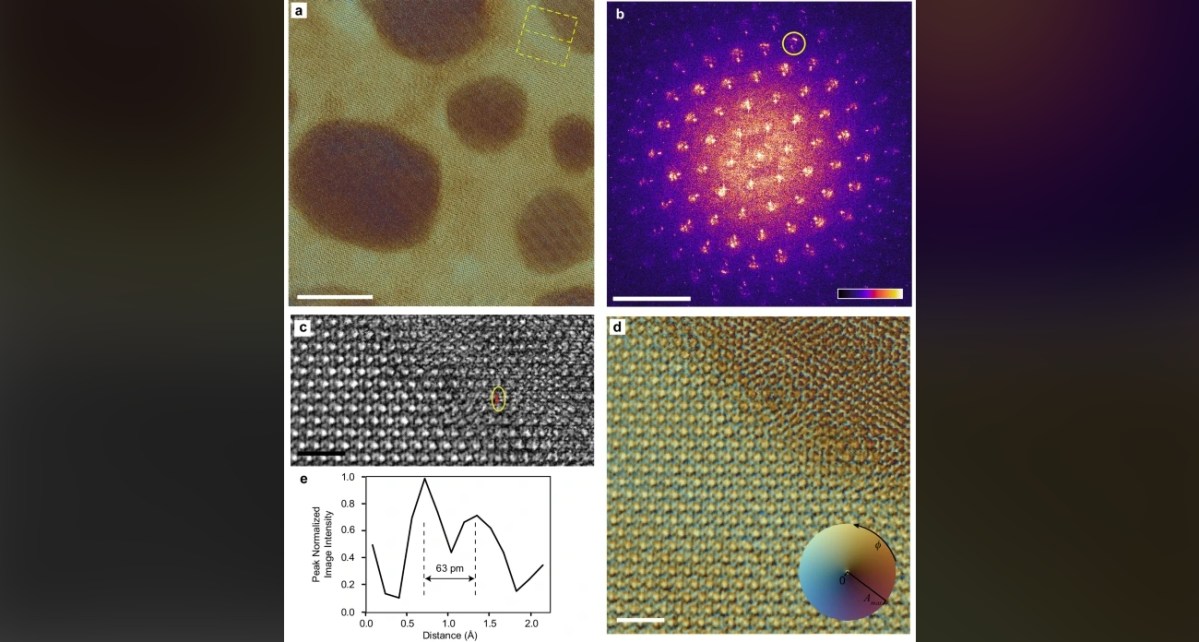Science
UVic Scientists Revolutionize Electron Microscopy with New Technique

Researchers at the University of Victoria have made a significant advancement in the field of electron microscopy. They have developed a new imaging technique that achieves an unprecedented resolution of less than 0.67 Ångström, allowing scientists to visualize the atomic world with exceptional clarity. This breakthrough was led by Arthur Blackburn, co-director of UVic’s Advanced Microscopy Facility, and represents a shift in how atomic-scale imaging can be conducted in laboratories globally.
Traditionally, achieving such high-resolution imaging required large, multimillion-dollar transmission electron microscopes (TEMs). In contrast, the team utilized a compact, low-energy scanning electron microscope (SEM) paired with advanced computational techniques. “This work shows that high-resolution imaging doesn’t have to rely on expensive, complex equipment,” Blackburn stated. The findings were published on October 3, 2025, in the journal Nature Communications.
The innovative technique at the heart of this breakthrough is known as pytchography. This method employs overlapping patterns of scattered electrons to reconstruct detailed images, enabling the researchers to achieve a resolution smaller than a single atom. Notably, this level of precision is approximately one-tenth the width of a human hair.
This development holds the potential to make atomic-scale imaging more accessible by reducing costs, energy consumption, and the physical space required for high-resolution microscopes. Blackburn emphasized the impact this innovation could have on various scientific fields, stating, “This could be transformative for fields like materials science, nanotechnology, and structural biology.” The immediate benefits are expected to be seen in the research and production of two-dimensional materials, which are crucial for developing next-generation electronics.
Looking towards the future, Blackburn noted that this discovery may also assist in determining the structure of small proteins, which could significantly contribute to health and disease research. The research was conducted in collaboration with Hitachi High-Tech Canada and received support from the Natural Sciences and Engineering Research Council of Canada.
With this advancement, researchers worldwide may soon have access to improved microscopy techniques, paving the way for accelerated innovation across multiple disciplines. The implications of this work extend far beyond the laboratory, potentially reshaping our understanding of materials at the atomic level and their applications in technology and medicine.
-

 Politics4 weeks ago
Politics4 weeks agoSecwepemc First Nation Seeks Aboriginal Title Over Kamloops Area
-

 World5 months ago
World5 months agoScientists Unearth Ancient Antarctic Ice to Unlock Climate Secrets
-

 Entertainment5 months ago
Entertainment5 months agoTrump and McCormick to Announce $70 Billion Energy Investments
-

 Science5 months ago
Science5 months agoFour Astronauts Return to Earth After International Space Station Mission
-

 Lifestyle5 months ago
Lifestyle5 months agoTransLink Launches Food Truck Program to Boost Revenue in Vancouver
-

 Technology3 months ago
Technology3 months agoApple Notes Enhances Functionality with Markdown Support in macOS 26
-

 Lifestyle3 months ago
Lifestyle3 months agoManitoba’s Burger Champion Shines Again Amid Dining Innovations
-

 Top Stories2 months ago
Top Stories2 months agoUrgent Update: Fatal Crash on Highway 99 Claims Life of Pitt Meadows Man
-

 Politics4 months ago
Politics4 months agoUkrainian Tennis Star Elina Svitolina Faces Death Threats Online
-

 Sports5 months ago
Sports5 months agoSearch Underway for Missing Hunter Amid Hokkaido Bear Emergency
-

 Politics5 months ago
Politics5 months agoCarney Engages First Nations Leaders at Development Law Summit
-

 Technology5 months ago
Technology5 months agoFrosthaven Launches Early Access on July 31, 2025





















